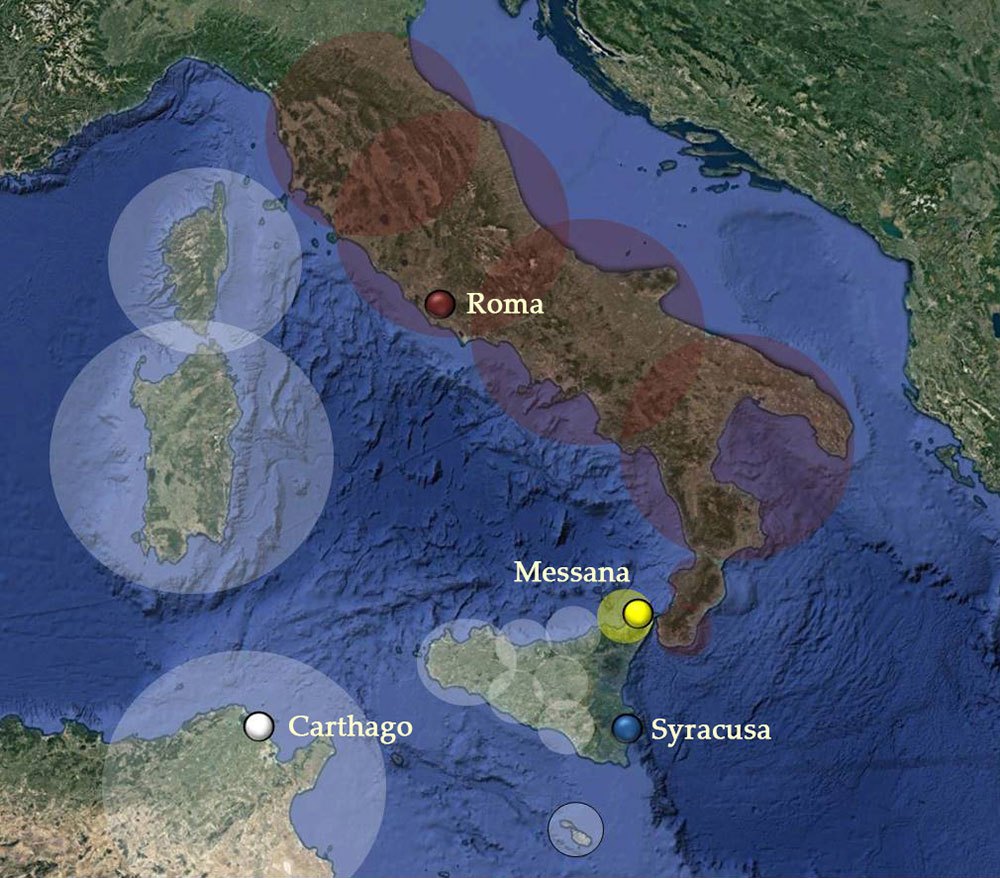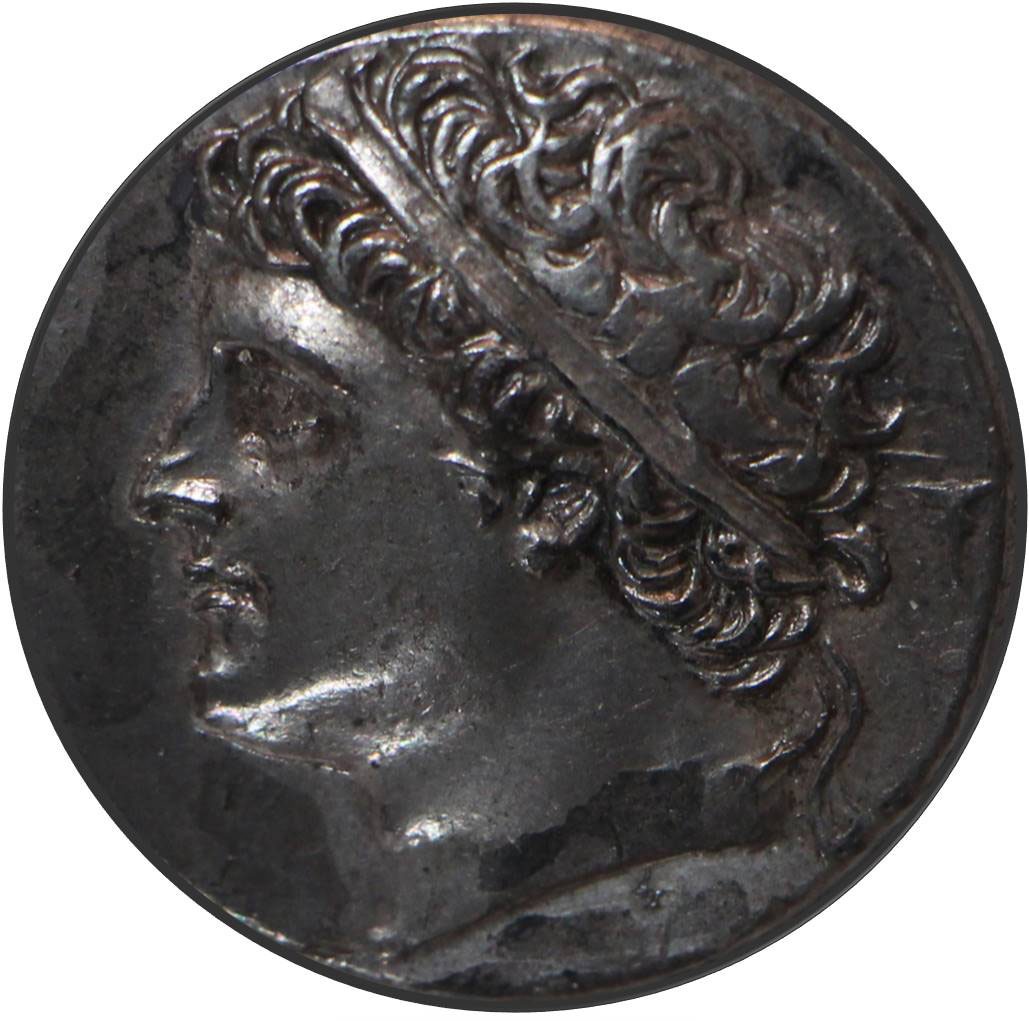First Punic War—264-241 BC
Prelude to the First Punic War–Spheres of Influence
Most of the action took place in Sicily and Northern Africa. These were the major players—Rome, Carthage, Messana, and Syracuse—and the relevant territories involved.
Events Leading to the First Punic War; 264 BC
Causes of the First Punic War
- A band of Italian mercenaries called the Mammertines take the city of Messana by treachery, murdering the leading citizens, then taking their wives and property. The Mammertines adopt an aggressive policy of expansion through conquest.
- Syracusa, within whose sphere of influence Messana had fallen in the past, becomes concerned about Mammertine aggressiveness. The Syracusans march on the Mammertines and crush them at the battle of Longanus.
- The Carthaginians, sensing an opportunity, offer to garrison Messana’s citadel, thus robbing the Syracusans of the fruits of their victory.
- The Mammertines, feeling vulnerable and wanting to buttress their position, sign a treaty of friendship with Rome and invite the Carthaginians to vacate their city.
The Immediate Cause of the First Punic War
With the withdrawal of Pyrrhus from Italy and Sicily, and the consolidation of the Italian peninsula by the Romans, the political situation in the Western Mediterranean seemed to have reached a state of equilibrium. Unfortunately, the Mammertines, a body of mercenaries, freebooters and murderers, took Messana by force after being invited by the locals to help in their defense. Over the next few years, the Mammertines expanded their holdings through a policy of conquest. The Syracusans, who saw Messana as traditionally falling under their sphere of influence, made a move on the Mammertines and defeated them in the battle of the Longanus River. The Mammertines threw themselves on the mercy of Hiero, the general and tyrant of Syracuse. In the meantime, the Carthaginians saw an opportunity to expand their influence and limit that of Syracuse and they offered to place a garrison in the citadel at Messana, effectively putting the Mammertines under their protection. There was nothing Hiero could do at the moment, so he bided his time.
Silver coin with image of Hiero II of Syracuse, 275-215 BC
Hiero (Greek: Hieron), was a savvy politician and diplomat, effective military commander and an excellent ruler. He understood that Rome was an emergent power, stronger than Carthage. Consequently, he allied himself with the Romans during the First Punic War, thus preserving Syracusan independence until his successors threw it away by challenging Roman hegemony in Sicily during the Second Punic War.
Although the official beginning of the conflict is dated to 264 BC, actual fighting, between Rome, Syracuse and Carthage, didn’t begin until the campaigning season of 263 BC. Even then, all of the major parties, Rome, Carthage and Syracuse, tried their best to avoid actual fighting. However, before getting into the military campaign, it’s worth looking at the activity that preceded it in the year before, 264 BC.
After the Mammertines made their overture to the Roman Senate, sometime in winter of 265-264 BC and persuaded the Carthaginians to abandon the Messanian citadel, Hiero of Syracuse decided to make an alliance with Carthage. His intent was to arrive at a final resolution of the Mammertine problem by taking Messana by storm, selling the non-Greek elements into slavery, and incorporating the Greek population of the city into the Syracusan body politic. In this way, Hiero could be seen as a champion of Sicilian Greek rights and a strong leader who was advancing Syracusan interests.
Carthage, by entering into a treaty with Hiero, would be complying with a fait accompli rather than allowing Hiero to unilaterally take Messana. In this way Carthage would be seen by Sicilians as also championing Greek rights against Italic (Mammertine) outsiders. For Carthage this was a way to preserve her legitimacy and interests with the Greek cities within her sphere of influence in Sicily. Also, it would presumably keep Rome from defeating Syracuse and forcing her into an alliance with Rome, thus leaving Carthage alone to face a formidable expansionist strategic power in alliance with a robust regional power.
By investing and destroying Messana quickly, selling the Mammertines into slavery, and absorbing the remaining Greek population before the Senate was able to mobilize an expeditionary force, Hiero would present Rome with a fait accompli, and eliminate the immediate cause for hostilities.


